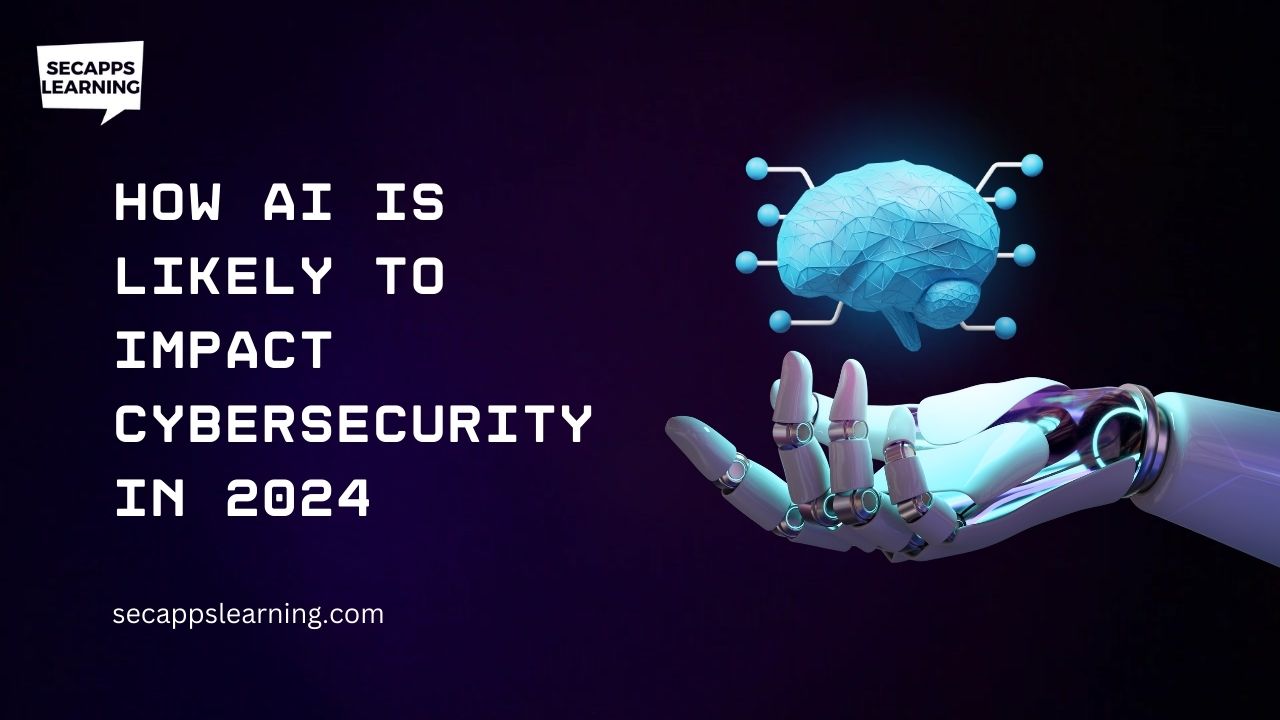
AI or Artificial Intelligence is hogging international headlines everywhere as it looks poised to create a significant impact on cybersecurity in 2024 with both positive and challenging implications.
Artificial Intelligence (AI) and machine learning (ML) are closely related fields, and their intersection will continue to have significant implications for cybersecurity.
Let’s explore how this is transforming cybersecurity in 2024:
AI algorithms can analyze vast amounts of data to detect patterns and anomalies that might indicate cyber threats. For instance, next-generation firewalls (NGFWs) use AI to analyze file behaviours and judge their intent based on movement patterns even without relying on the file’s content.
AI automates several functions needed for threat defence, saving organisations time and resources. It improves threat detection by scaling operations across devices and networks without requiring additional hardware or personnel.
AI-driven models preempt cyber threats, catching malware and other malicious activities.
Also read: 4 Emerging Cybersecurity Threats in 2024
AI brings numerous benefits, but its adoption also comes with its own set of challenges:
AI systems heavily rely on data. Ensuring that the data used for training is accurate, representative, and sufficient can be challenging. Poor-quality or biased data can lead to faulty outputs and results.
AI algorithms can inadvertently perpetuate or even exacerbate biases present in the data they are trained on. Ensuring fairness and mitigating bias is a significant challenge in AI development.
Many AI models, especially deep learning models, are often seen as "black boxes" because it is difficult to understand how they arrive at their decisions. This lack of interpretability can be a barrier in critical applications where understanding the rationale behind decisions is crucial.
AI raises various ethical concerns, including privacy infringement, job displacement, and the potential for misuse such as in surveillance or autonomous weapons.
The rapid advancement of AI technology often outpaces the development of regulatory frameworks to govern its use. Compliance with existing regulations and ensuring that AI systems meet ethical standards can be challenging for organisations.
AI systems can be vulnerable to adversarial attacks, where malicious actors manipulate inputs to deceive the model. Ensuring the security and robustness of AI systems against such attacks is an ongoing challenge.
Developing and deploying AI models often require significant computational resources and expertise. This can be a barrier for smaller organisations or those operating in resource-constrained environments.
Integrating AI systems into existing workflows and ensuring effective collaboration between humans and AI is a complex challenge. It requires addressing issues such as trust, and user acceptance, and providing meaningful human oversight.
While AI has the potential to automate repetitive tasks and increase efficiency, it also raises concerns about job displacement and the need for re-skilling and up-skilling the workforce to adapt to changing job requirements.
The computational resources required to train and run AI models can have a significant environmental impact, contributing to carbon emissions and energy consumption.
Addressing these challenges requires a multi-faceted approach involving collaboration between policymakers, industry stakeholders, researchers, and ethicists to ensure that AI is developed and deployed responsibly and ethically.
AI-generated threats refer to potential risks and dangers posed by the malicious use of artificial intelligence technology. These threats can manifest in various forms and can have serious consequences if not properly addressed.
Some examples of AI-generated threats include:
AI can be used to automate and enhance the capabilities of cyberattacks such as creating sophisticated malware that can evade traditional security measures, launching highly-targeted phishing attacks, or conducting large-scale distributed denial-of-service (DDoS) attacks.
Adversarial attacks involve manipulating inputs to AI systems in a way that causes them to produce incorrect or undesirable outputs. For example, attackers can use AI-generated images or audio to deceive image recognition or voice authentication systems.
Deepfake technology uses AI algorithms to create highly realistic fake images, audio, or videos of people, often for malicious purposes such as spreading disinformation, fabricating evidence, or impersonating individuals.
AI can be used to analyze vast amounts of data from social media and other sources to craft highly personalised and convincing social engineering attacks, such as targeted phishing emails or scam calls.
Read: What is Social Engineering, Examples and Prevention Tips
Governments and malicious actors can use AI-powered surveillance systems to monitor and track individuals' activities, infringing on privacy rights and potentially enabling mass surveillance and social control.
AI technology can be weaponised for military purposes, including autonomous weapons systems capable of identifying and attacking targets without human intervention, raising concerns about the potential for unintended escalation and loss of human control.
AI algorithms trained on biased or discriminatory data can perpetuate and amplify existing social biases, leading to unfair treatment or discrimination in various domains such as hiring, lending, and law enforcement.
AI can be used to automate financial fraud schemes, such as credit card fraud, money laundering, or stock market manipulation, by exploiting vulnerabilities in financial systems and processes.
Addressing such AI-generated threats requires a combination of technical solutions, regulatory measures, and ethical guidelines to ensure that AI technology is developed and deployed responsibly, with safeguards in place to mitigate potential risks and protect against malicious misuse.
This includes efforts to enhance cybersecurity, promote transparency and accountability in AI systems, and establish clear legal frameworks to govern the ethical use of AI.
Your email address will not be published. Required fields are marked*
Copyright 2022 SecApps Learning. All Right Reserved
Comments ()